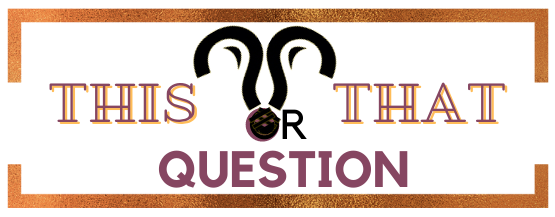Body’s vs Bodies
The terms “body’s” and “bodies” can be confusing, especially when they’re used in the same sentence. But they don’t actually mean the same thing.
The term “body” is a singular noun that is used to refer to a single physical entity. It is most commonly used to refer to a person’s physical form, but can also refer to an animal or a non-living object. For example, when talking about a person, you might say “I have a strong body” or “She has a beautiful body.” When talking about an animal, you might say “That dog has a strong body” or “That cat has a sleek body.” When talking about a non-living object, you might say “That car has a powerful body” or “That boat has a sturdy body.”
The term “bodies” is a plural noun that is used to refer to multiple physical entities. It is most commonly used to refer to multiple people, animals, or non-living objects. For example, when talking about multiple people, you might say “We have strong bodies” or “They have beautiful bodies.” When talking about multiple animals, you might say “Those dogs have strong bodies” or “Those cats have sleek bodies.” When talking about multiple non-living objects, you might say “Those cars have powerful bodies” or “Those boats have sturdy bodies.”
The terms “body’s” and “bodies” have different meanings and should not be used interchangeably. The term “body’s” is used when referring to a single physical entity, while the term “bodies” is used when referring to multiple physical entities.Body’s vs Bodies
The terms “body’s” and “bodies” can be confusing, especially when they’re used in the same sentence. But they don’t actually mean the same thing.
The term “body” is a singular noun that is used to refer to a single physical entity. It is most commonly used to refer to a person’s physical form, but can also refer to an animal or a non-living object. For example, when talking about a person, you might say “I have a strong body” or “She has a beautiful body.” When talking about an animal, you might say “That dog has a strong body” or “That cat has a sleek body.” When talking about a non-living object, you might say “That car has a powerful body” or “That boat has a sturdy body.”
The term “bodies” is a plural noun that is used to refer to multiple physical entities. It is most commonly used to refer to multiple people, animals, or non-living objects. For example, when talking about multiple people, you might say “We have strong bodies” or “They have beautiful bodies.” When talking about multiple animals, you might say “Those dogs have strong bodies” or “Those cats have sleek bodies.” When talking about multiple non-living objects, you might say “Those cars have powerful bodies” or “Those boats have sturdy bodies.”
The terms “body’s” and “bodies” have different meanings and should not be used interchangeably. The term “body’s” is used when referring to a single physical entity, while the term “bodies” is used when referring to multiple physical entities.Body’s vs Bodies
The terms “body’s” and “bodies” can be confusing, especially when they’re used in the same sentence. But they don’t actually mean the same thing.
The term “body” is a singular noun that is used to refer to a single physical entity. It is most commonly used to refer to a person’s physical form, but can also refer to an animal or a non-living object. For example, when talking about a person, you might say “I have a strong body” or “She has a beautiful body.” When talking about an animal, you might say “That dog has a strong body” or “That cat has a sleek body.” When talking about a non-living object, you might say “That car has a powerful body” or “That boat has a sturdy body.”
The term “bodies” is a plural noun that is used to refer to multiple physical entities. It is most commonly used to refer to multiple people, animals, or non-living objects. For example, when talking about multiple people, you might say “We have strong bodies” or “They have beautiful bodies.” When talking about multiple animals, you might say “Those dogs have strong bodies” or “Those cats have sleek bodies.” When talking about multiple non-living objects, you might say “Those cars have powerful bodies” or “Those boats have sturdy bodies.”
The terms “body’s” and “bodies” have different meanings and should not be used interchangeably. The term “body’s” is used when referring to a single physical entity, while the term “bodies” is used when referring to multiple physical entities.Body’s vs Bodies
The terms “body’s” and “bodies” can be confusing, especially when they’re used in the same sentence. But they don’t actually mean the same thing.
The term “body” is a singular noun that is used to refer to a single physical entity. It is most commonly used to refer to a person’s physical form, but can also refer to an animal or a non-living object. For example, when talking about a person, you might say “I have a strong body” or “She has a beautiful body.” When talking about an animal, you might say “That dog has a strong body” or “That cat has a sleek body.” When talking about a non-living object, you might say “That car has a powerful body” or “That boat has a sturdy body.”
The term “bodies” is a plural noun that is used to refer to multiple physical entities. It is most commonly used to refer to multiple people, animals, or non-living objects. For example, when talking about multiple people, you might say “We have strong bodies” or “They have beautiful bodies.” When talking about multiple animals, you might say “Those dogs have strong bodies” or “Those cats have sleek bodies.” When talking about multiple non-living objects, you might say “Those cars have powerful bodies” or “Those boats have sturdy bodies.”
The terms “body’s” and “bodies” have different meanings and should not be used interchangeably. The term “body’s” is used when referring to a single physical entity, while the term “bodies” is used when referring to multiple physical entities.


